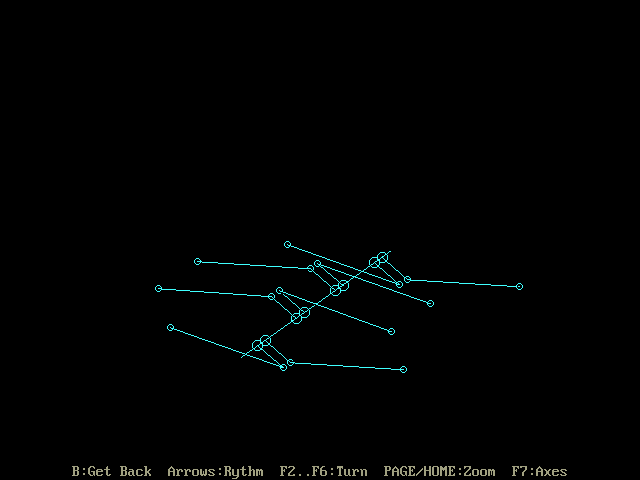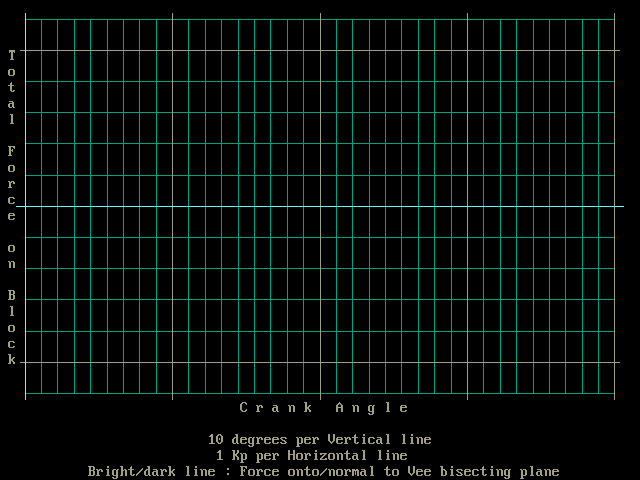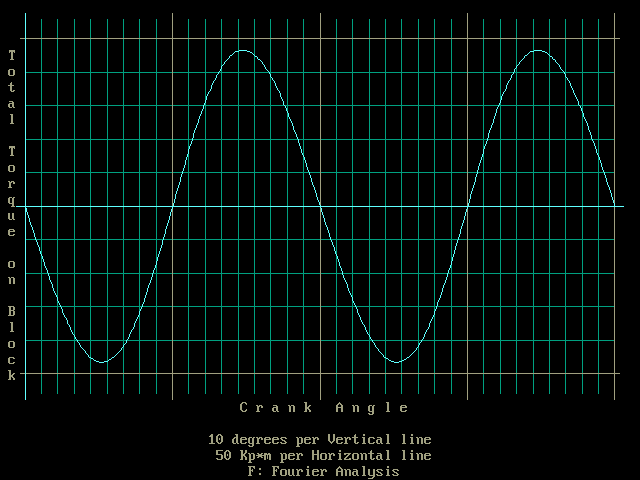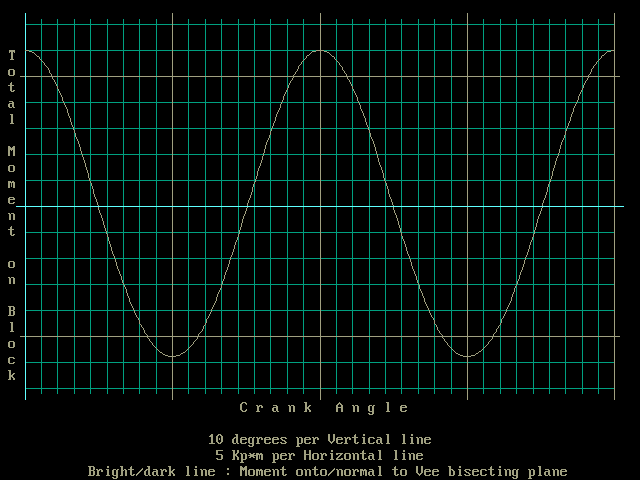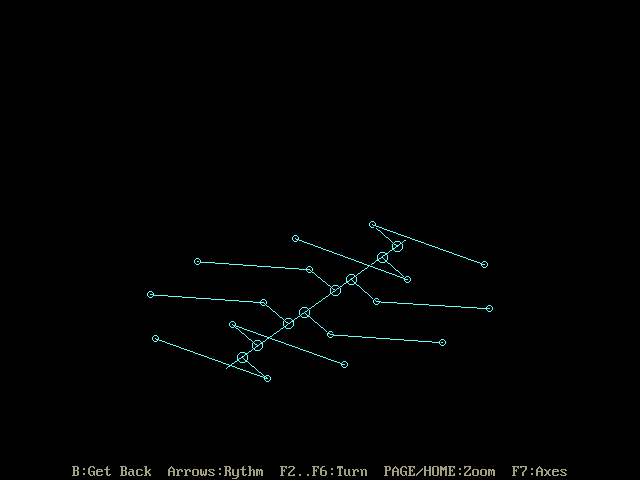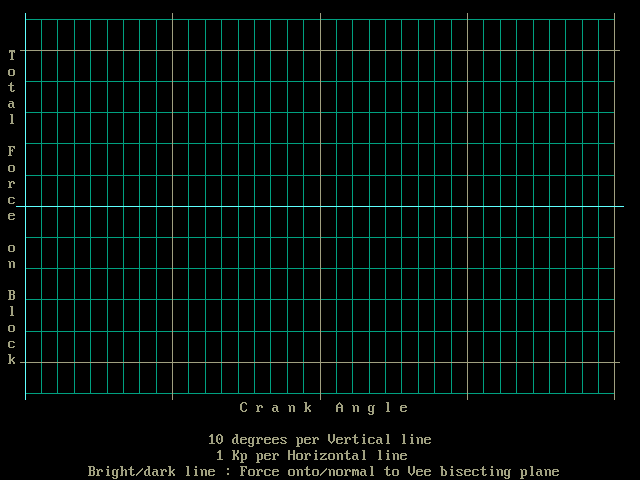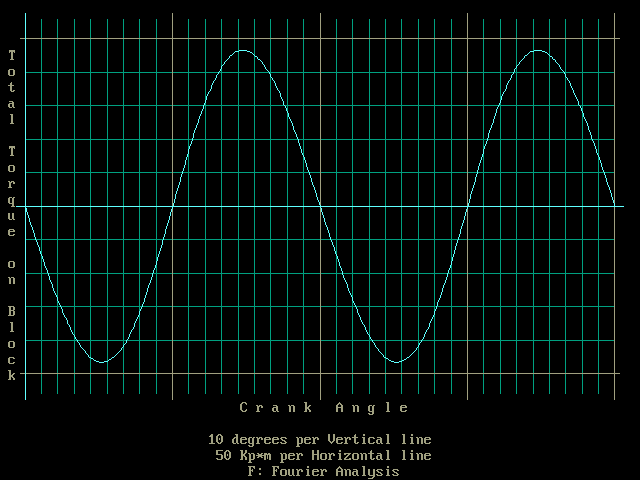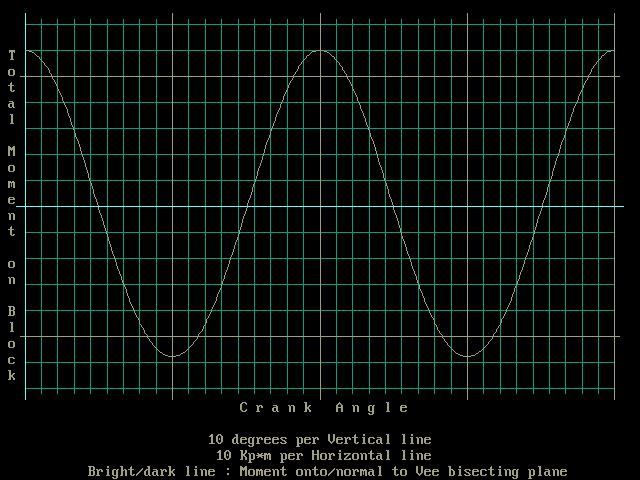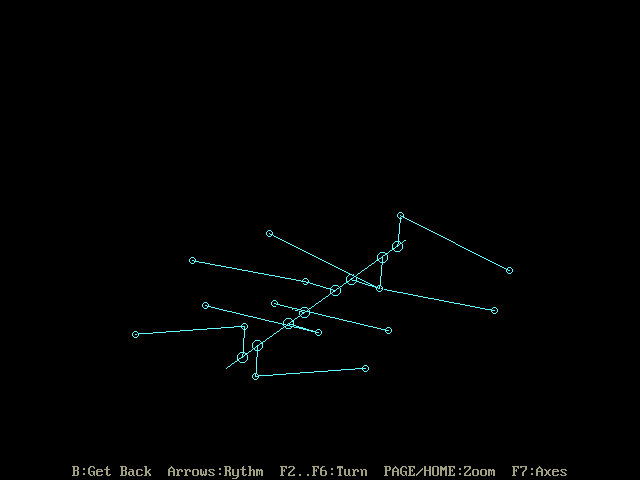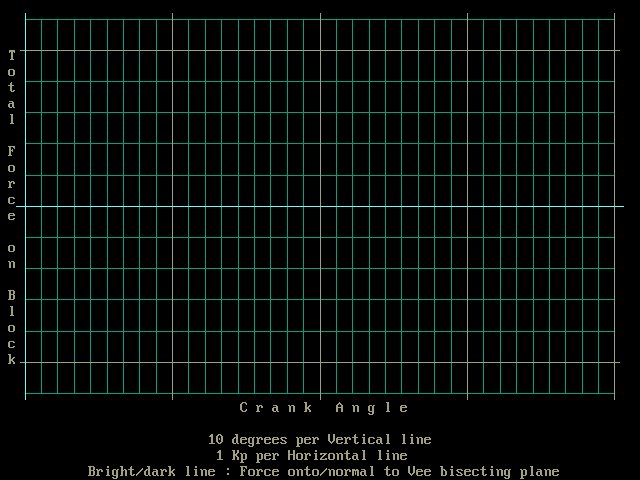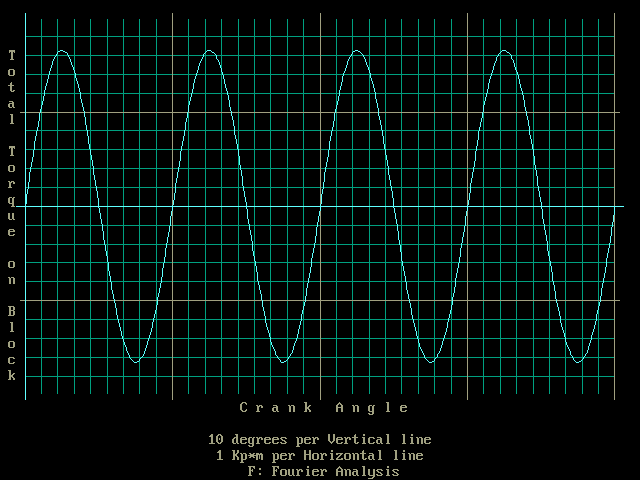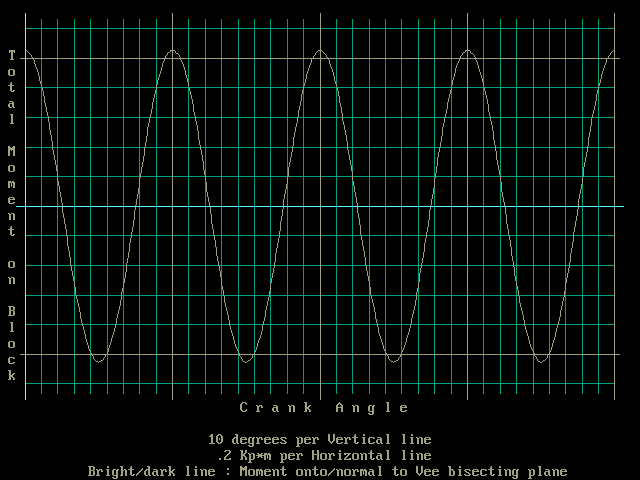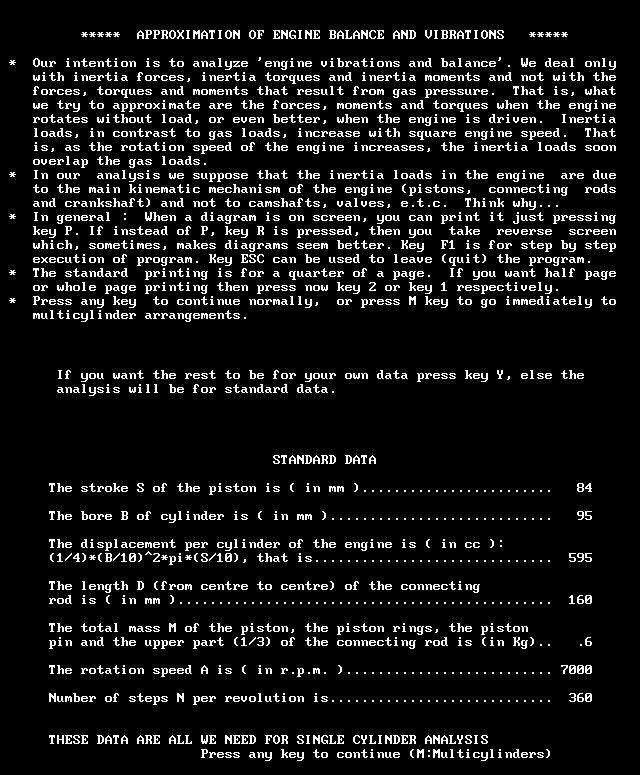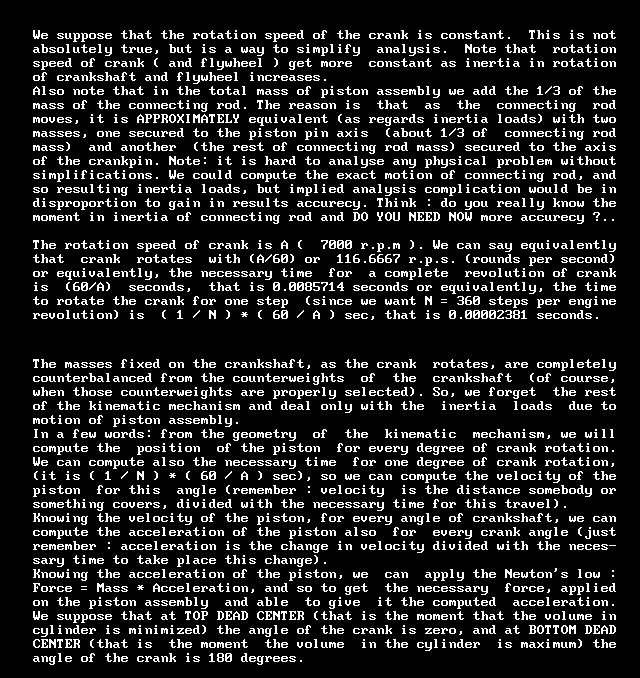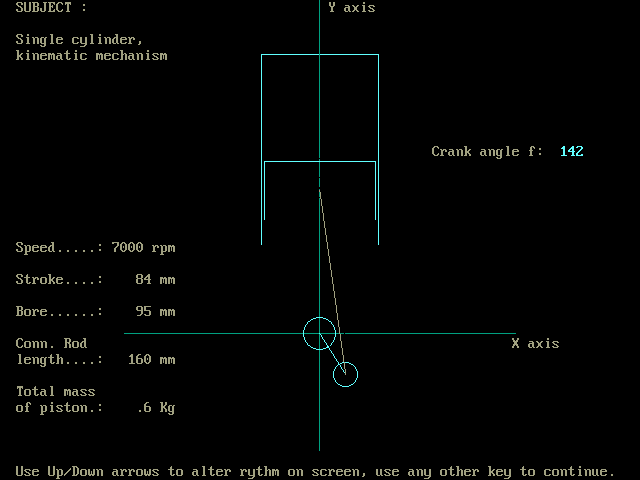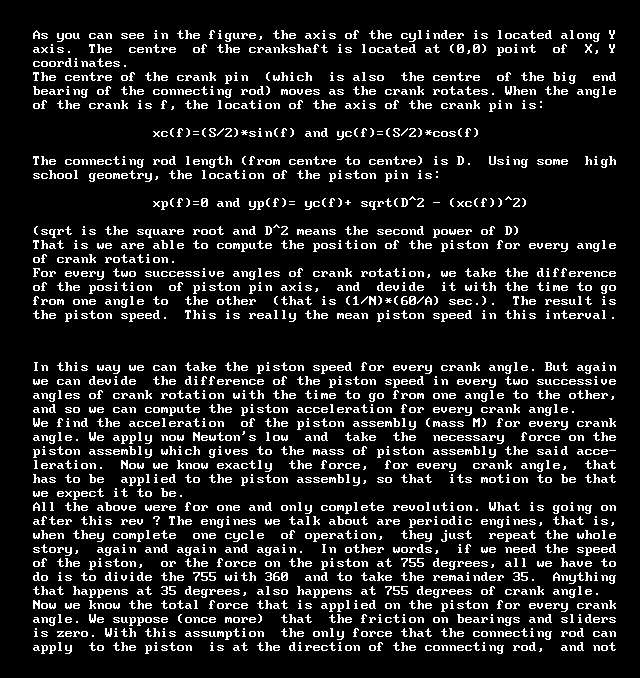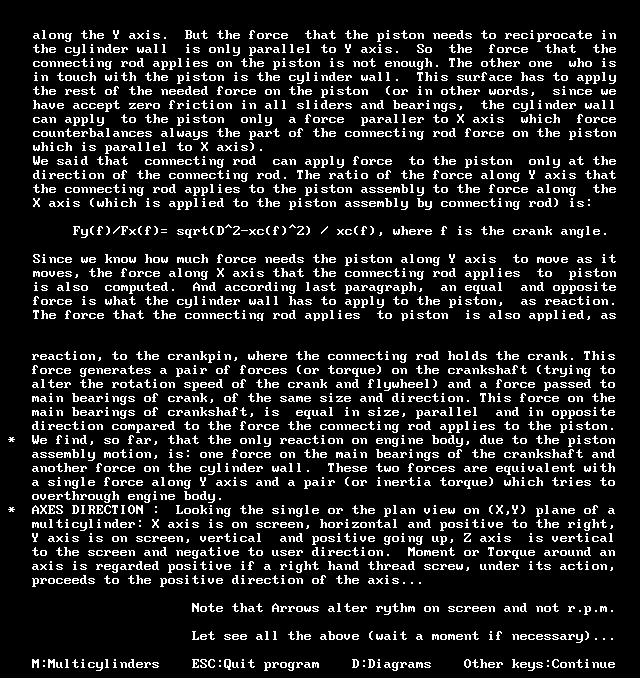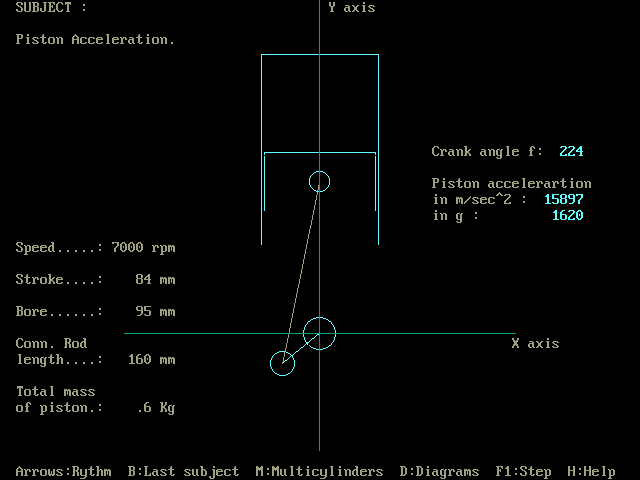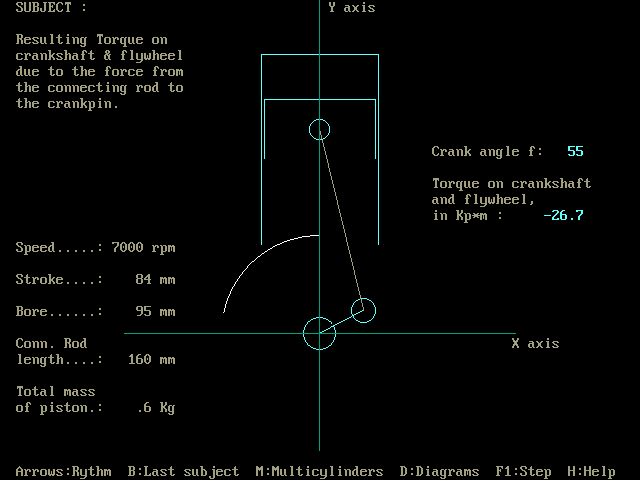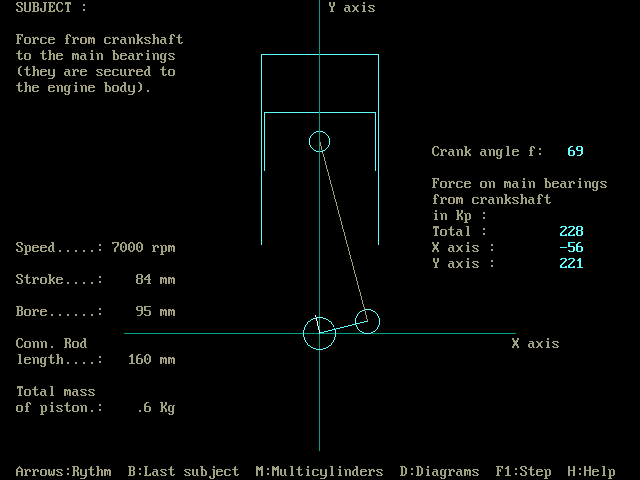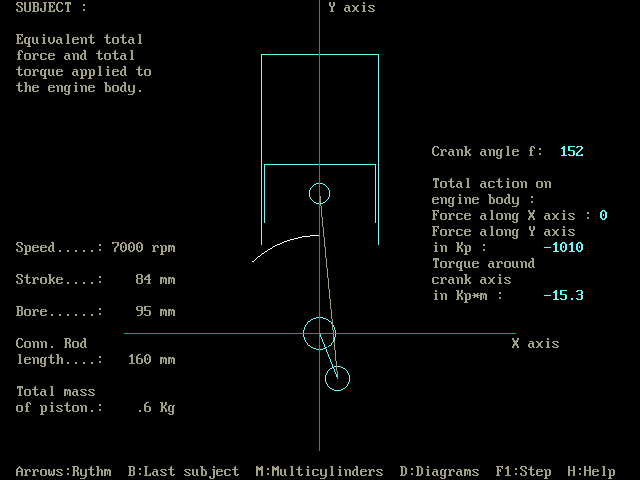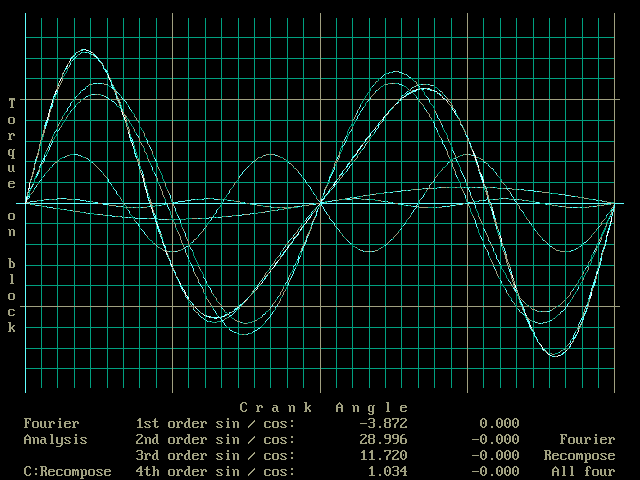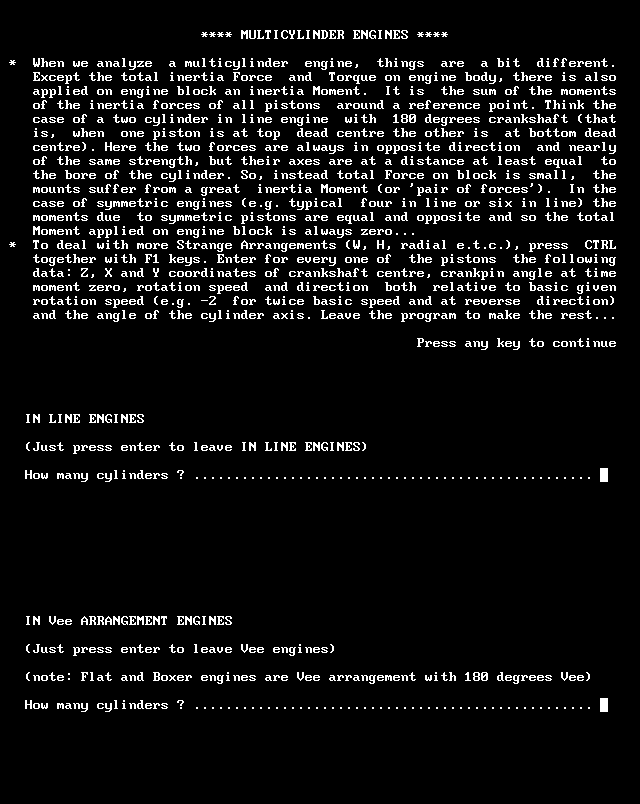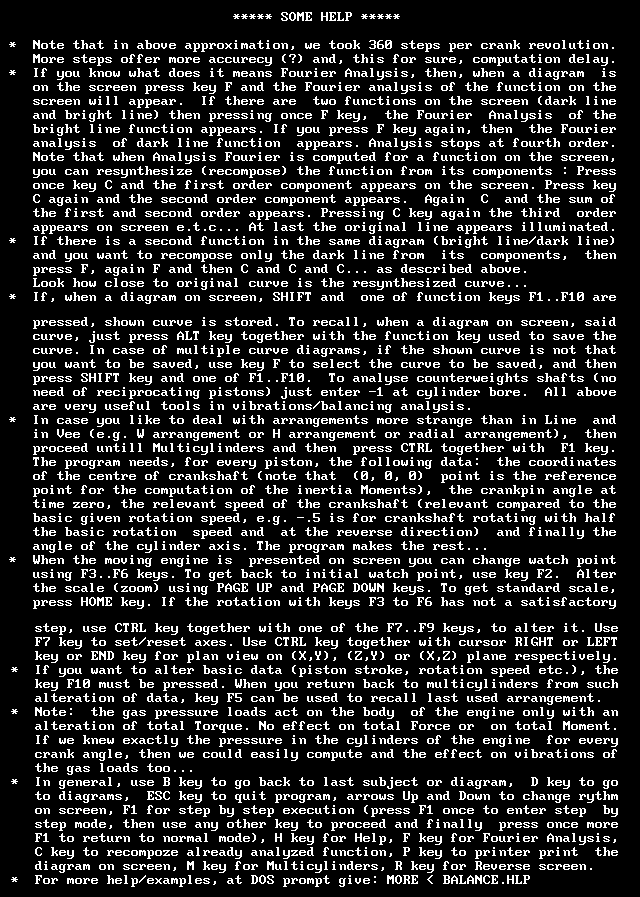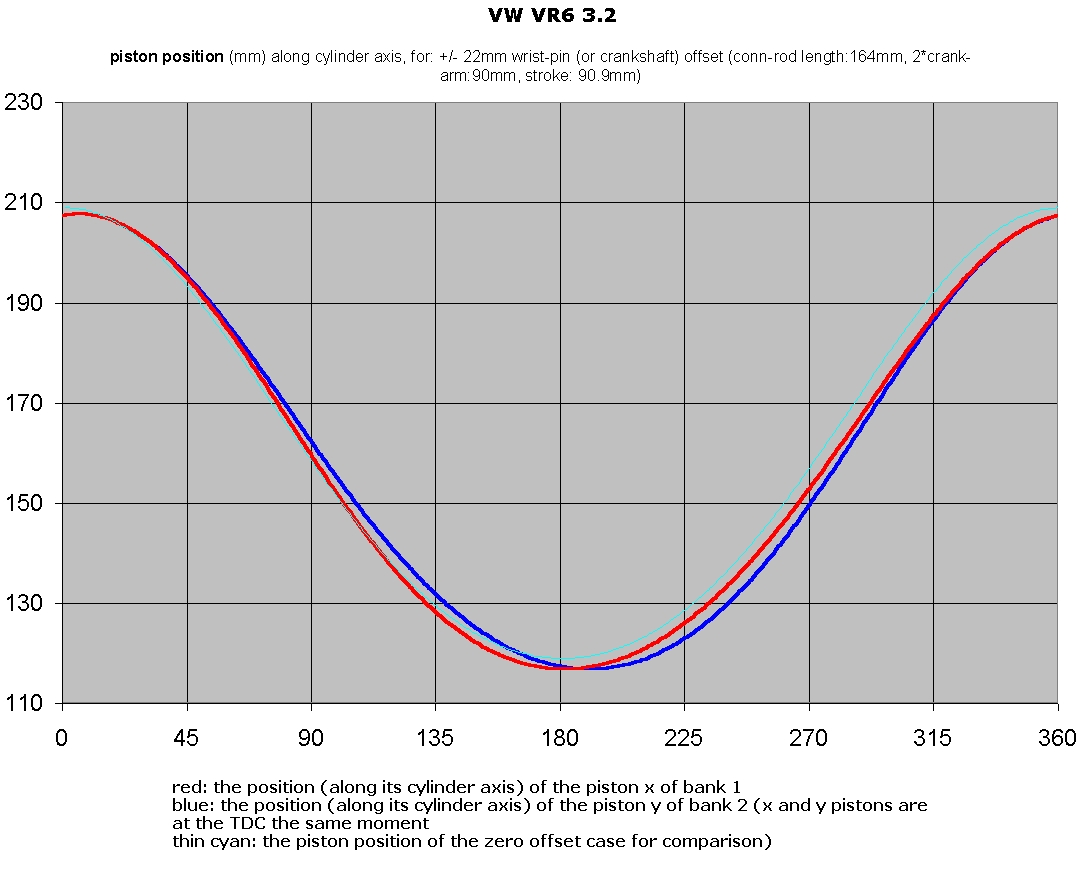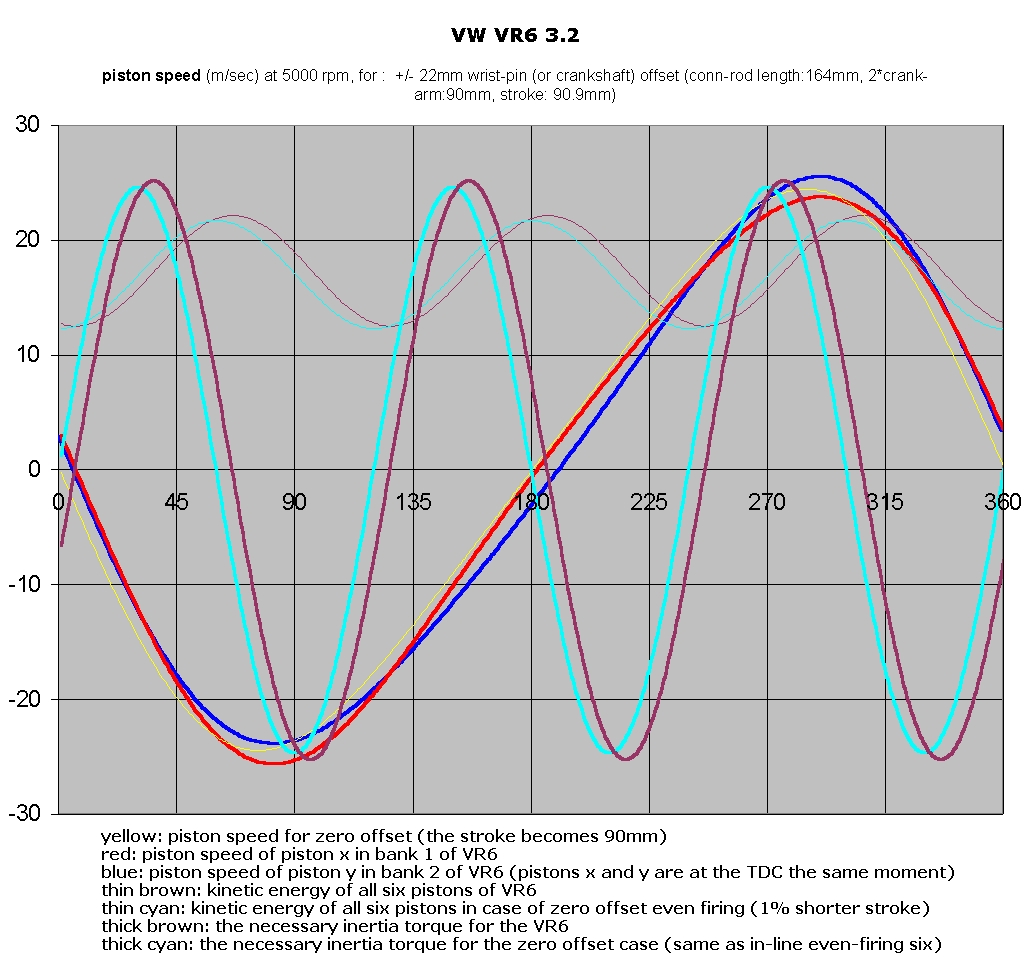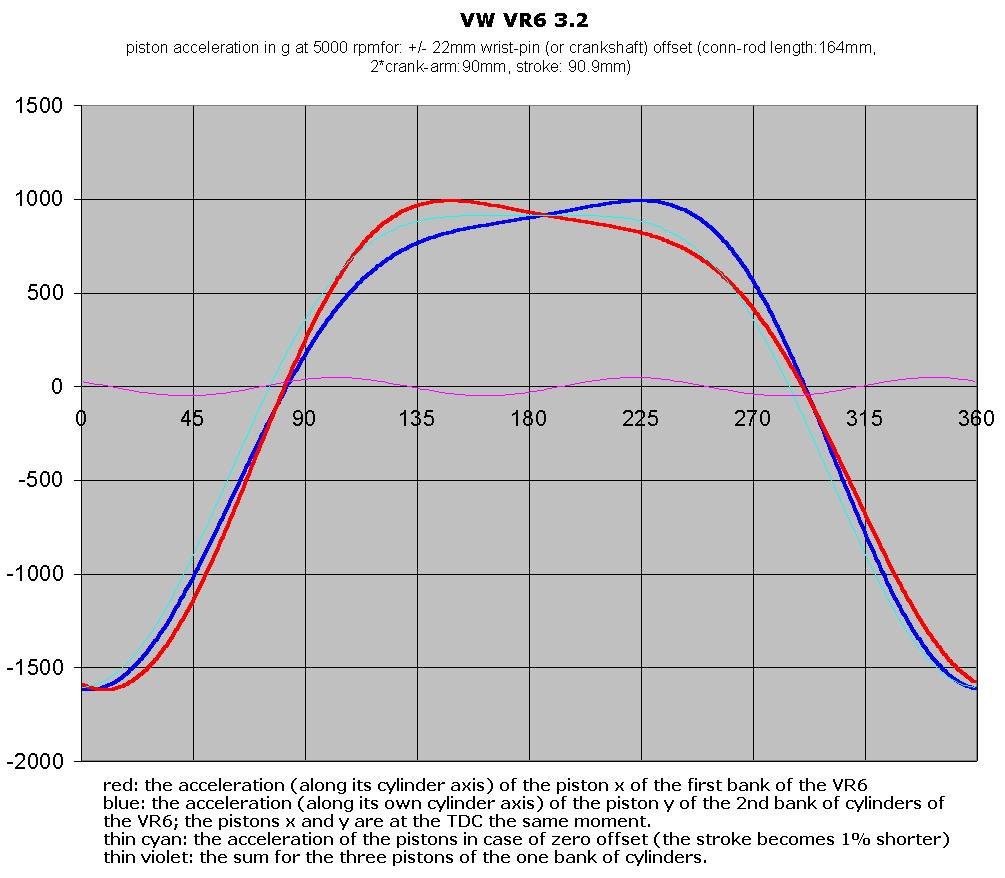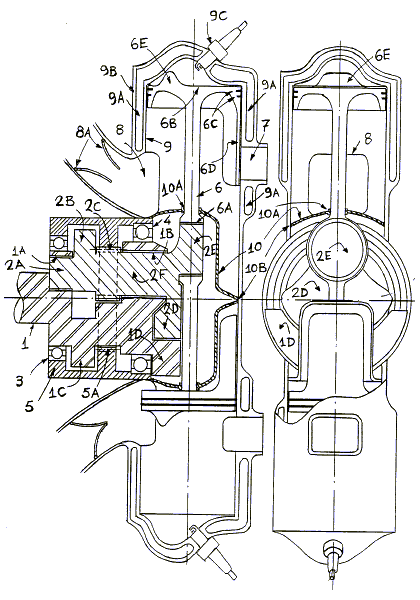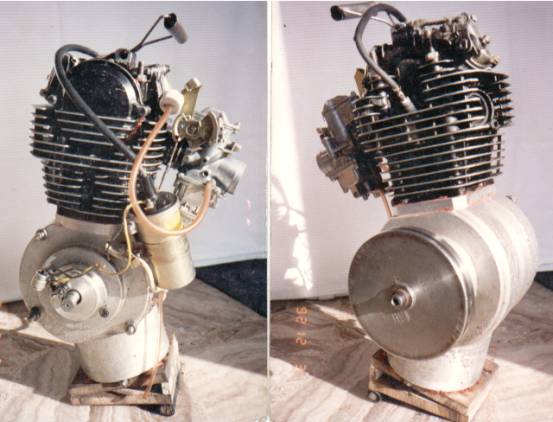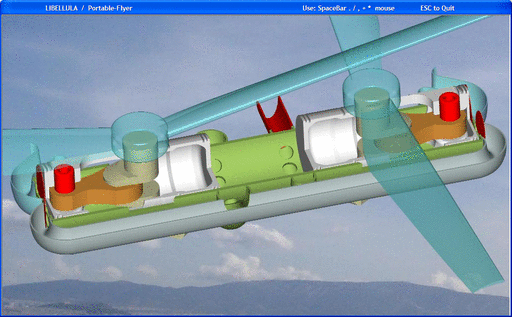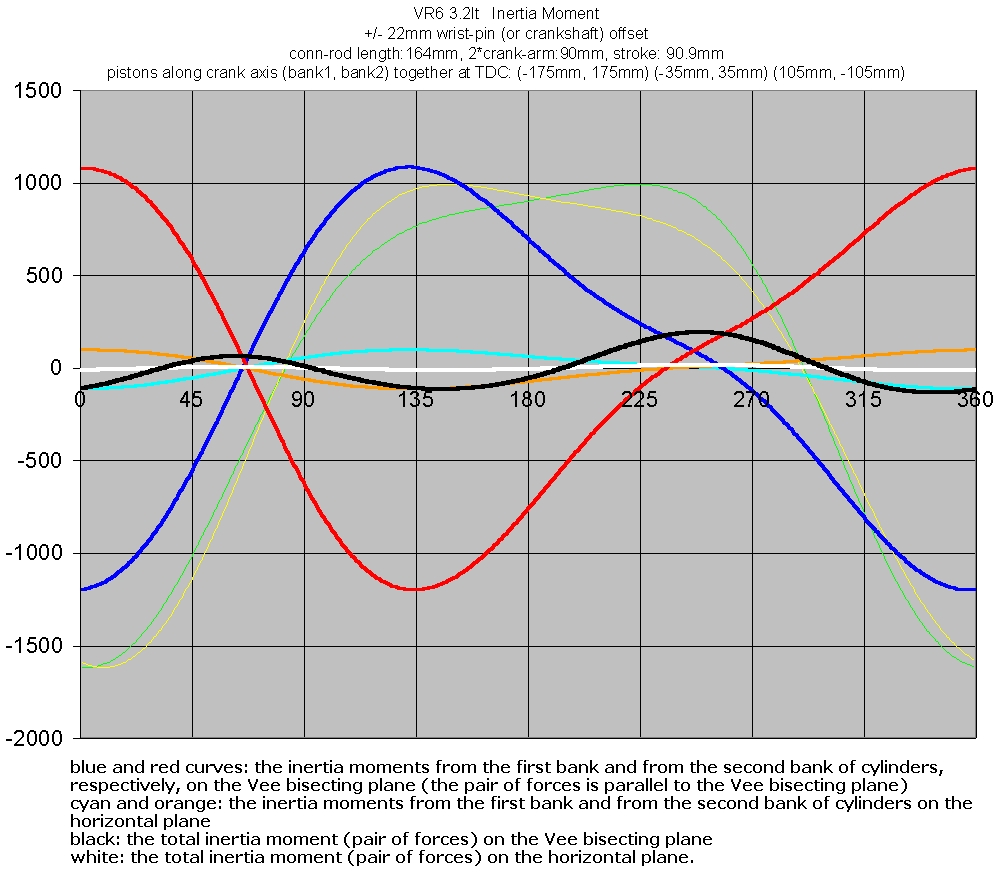0, 180, 90, 270, 270, 90, 180 and 0
0, 180, 180, 0, 90, 270, 270 and 90
0, 180, 90, 270, 180, 0, 270 and 90
what are the firing orders for these engines?
Hello autouniondkw.
Let's take the first arrangement of crankpins of the boxer eight:
0, 180, 90, 270, 270, 90, 180 and 0
Here is the resulting "cylinder angles"
0, 0, 90, 90, 270, 270, 180 and 180
How? The second crankpin is for the first cylinder of the second bank of cylinders which is arranged at 180 degrees from the first bank of cylinders, so the crankpin at 180 degrees corresponds to a true angle of 180+180=360=0degrees.
From another viewpoint: when the piston of the first cylinder is at TDC, the piston of the second cylinder is at TDC, too.
For even firing, the possible "firing orders" result as:
1, 5, (2,6), (6,2), (3,7), (7,3), (4,8), (8,4)
That is, the second cylinder will always fire fifth (i.e. 360 crank degrees after the 1st cylinder).
Note: the numbering of the cylinders start from the one end of the crankshaft and proceeds progressively along the crankshaft.
The "firing order" is not the conventional firing order. The 5 in column 2 says that the second cylinder will fire 5th.
The third cylinder can fire either second (then the fourth cylinder will fire sixth) or sixth (and then the fourth cylinder will fire second). I.e. there are two cases for the pair of the 3rd and 4th cylinder.
So, until now, we have two different "firing orders":
1, 5, 2, 6 (??)
and
1, 5, 6, 2 (??).
The fifth cylinder can fire either third (then the sixth cylinder will fire seventh) or seventh (and then the sixth cylinder will fire third). I.e. there are two cases for the pair of the 5th and 6th cylinders. In combination with the previous, here are the possible "firing orders":
1, 5, 2, 6, 3, 7, (??)
1, 5, 6, 2, 3, 7, (??)
1, 5, 2, 6, 7, 3, (??)
1, 5, 6, 2, 7, 3, (??)
The seventh cylinder can fire either fourth (then the eighth cylinder will fire eight) or eighth (and then the eighth cylinder will fire fourth. I.e. there are two cases for the pair of the 7th and 8th cylinders. In combination with the previous, all the available "firing order" of the even firing boxer eight having crankpins at 0, 180, 90, 270, 270, 90, 180 and 0 are:
1, 5, 2, 6, 3, 7, 4, 8 (conventional firing order: 1, 3, 5, 7, 2, 4, 6, 8)
1, 5, 6, 2, 3, 7, 4, 8 (conventional firing order: 1, 4, 5, 7, 2, 3, 6, 8)
1, 5, 2, 6, 7, 3, 4, 8 (conventional firing order: 1, 3, 6, 7, 2, 4, 5, 8)
1, 5, 6, 2, 7, 3, 4, 8 (conventional firing order: 1, 4, 6, 7, 2, 3, 5, 8)
1, 5, 2, 6, 3, 7, 8, 4 (conventional firing order: 1, 3, 5, 8, 2, 4, 6, 7)
1, 5, 6, 2, 3, 7, 8, 4 (conventional firing order: 1, 4, 5, 8, 2, 3, 6, 7)
1, 5, 2, 6, 7, 3, 8, 4 (conventional firing order: 1, 3, 6, 8, 2, 4, 5, 7)
1, 5, 6, 2, 7, 3, 8, 4 (conventional firing order: 1, 4, 6, 8, 2, 3, 5, 7)
Take the first case:
1, 5, 2, 6, 3, 7, 4, 8
It corresponds to the conventional firing order: 1, 3, 5, 8, 7, 2, 4, 8. Similarly the rest.
You can apply the same reasoning to get the possible firing orders of the other two arrangements (the one with the crankpins at 0, 180, 180, 0, 90, 270, 270 and 90, the other with the crankpins at 0, 180, 90, 270, 180, 0, 270 and 90).
Having all the firing orders, you have to decide which is the best for your application (and there are several criteria to do so).
On the other hand, think that a Vee 90deg eight cylinder can be as vibration free as the above boxers, it can also be even firing, it has a substantially stronger crankshaft structure and its block is more lightweight and robust.
Is there any reasoning for going to the boxer arrangement?
Thanks
Manolis Pattakos
Edited by manolis, 22 November 2013 - 06:06.
















